Introduction
AR and VR trends in mobile apps are now highlighted alongside the rising mobile app development trends of today. These immersive technologies aren’t just for gamers or tech enthusiasts anymore.
They’re transforming how we go about our daily lives, especially in areas like healthcare, real estate, e-commerce, and even in the business world, to name a few. It’s pretty amazing, don’t you think?
Their machine learning backbone allows them to deliver highly personalized, interactive, and engaging user experiences, which are crucial in this digital age.
Whether you’re exploring what is AR apps on Android or diving into VR game making, these technologies are revolutionizing how we interact with digital content.
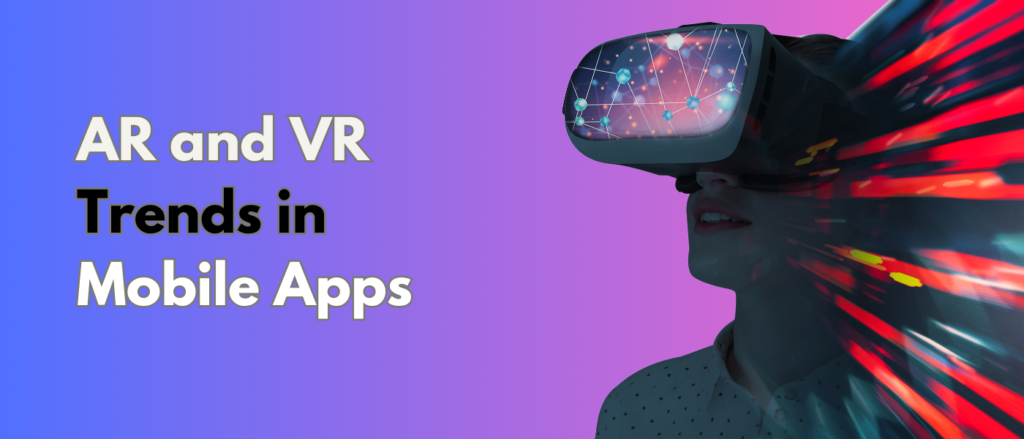
The AR and VR trends, both in AR and stereoscopic projections, indicate an upward movement in 2025, relying on hardware, software, and network connections such as 5G.
These emerging technology solutions are quickly grabbing the attention of corporates, and they are rapidly adopting them to engage customers more, enable processes better, generate new revenue streams, etc.
Mobile AR VR Online shopping examples, or how AR VR mobile app development can solve 3D object detection from face images, showcase the practical applications of these technologies. From AR phone games to augmented reality in business, the possibilities are endless.
Here is an in-depth walk-through of the most recent AR and VR trends, including relevant use cases and benefits for the future.
Let us investigate real-world examples, examine the uses of specific industries, and find ways for businesses to harness these technologies effectively.
Understanding AR and VR: The Building Blocks
Augmented Reality (AR)
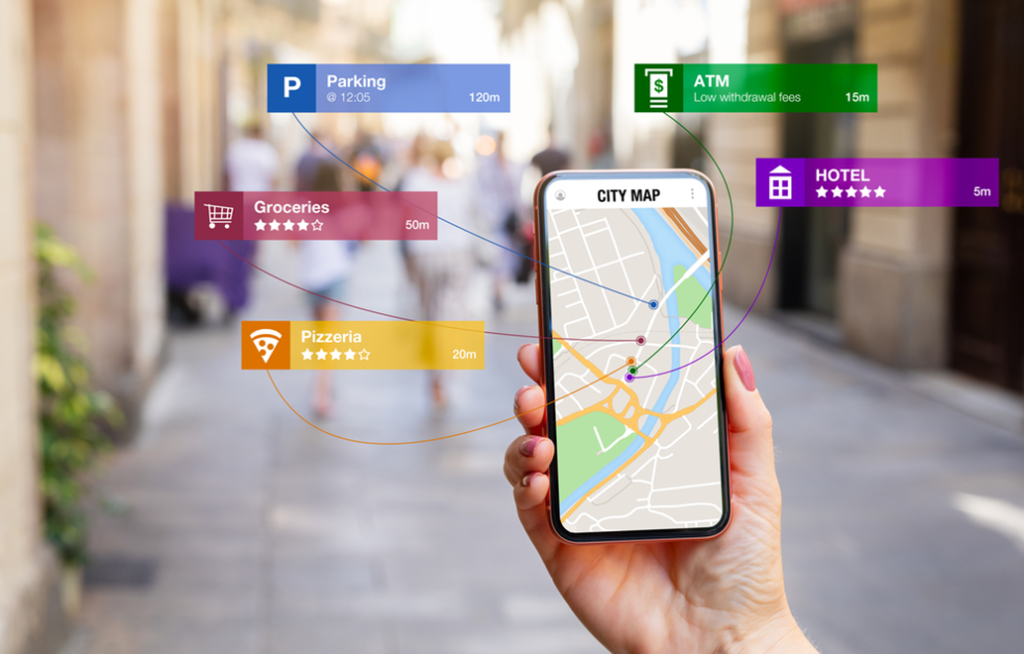
AR lays digital content directly over the physical world, and through smartphones, it has an accessibility that ranges from entertainment purposes to enterprise solutions.
AR app development has become increasingly sophisticated, offering experiences that combine the physical world with the digital world, with interactivity coupled with practicality.
Whether you’re interested in how to create augmented reality experiences or exploring AR apps for Android, the technology has become more accessible than ever.
Real-world Use Cases
Google Maps Live View: By using AR to display directions as overlaid upon the user’s surroundings, it makes navigation easier. This is a prime example of AR technology apps enhancing daily life.
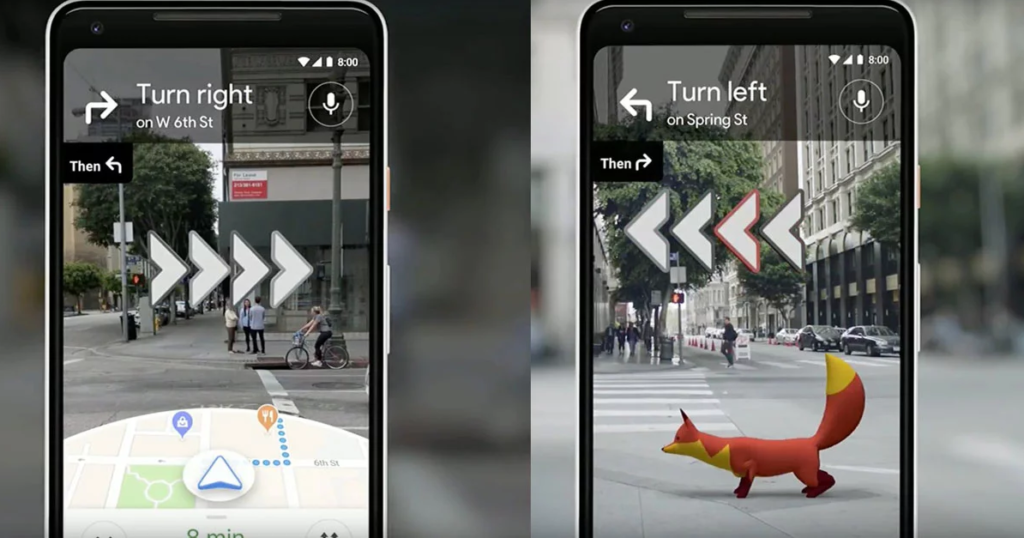
Sephora Virtual Artist: It allows users to try makeup virtually, which helps them make the right purchasing decisions while shopping online. This demonstrates how augmented reality software development can transform retail experiences.
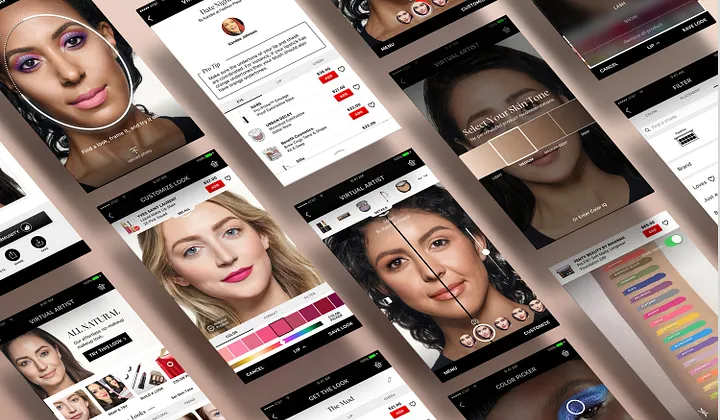
Virtual Reality (VR)
Virtual reality places the user in fully virtual environments and requires specific headsets for complete involvement.
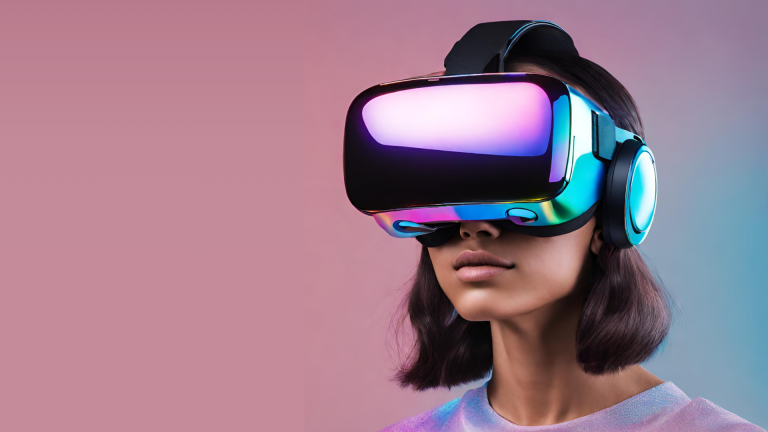
VR game making has evolved significantly, and it’s particularly useful in fields such as gaming, training, and therapy, where it can create scenarios similar to real-life situations or ones that do not exist at all.
Real-World Applications:
Oculus Venues: Enables users to watch concerts and sports in virtual venues, merging physical and digital forms of entertainment. This showcases how VR technology companies are pushing boundaries.
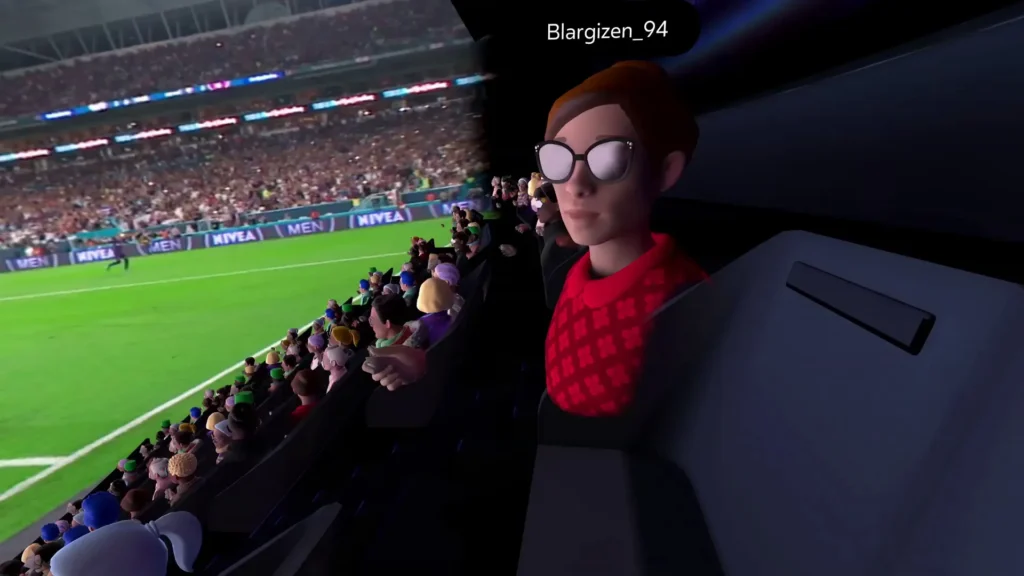
VR Training Modules by Walmart: They Offer employees immersive scenarios to learn skills without real-world consequences, improving both safety and efficiency. This is a perfect example of virtual reality in business applications.
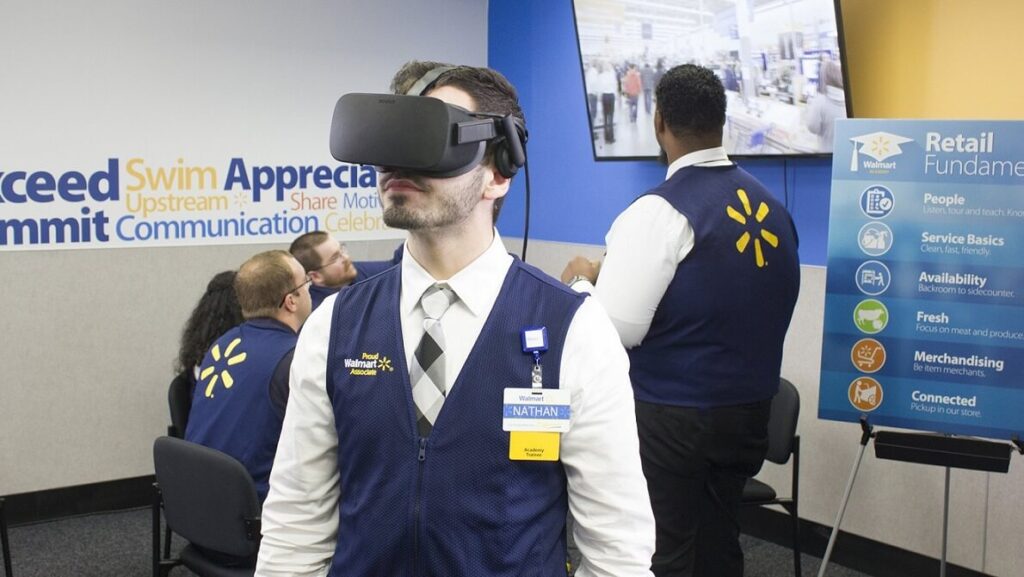
Together, AR and VR are not just tech buzzwords; they are foundational to the future of mobile apps, shaping how we interact with technology daily.
Understanding what is AR zone on Samsung or exploring AR games on iPhone is just the beginning of this technological revolution.
Top AR and VR Trends in Mobile App Development
- AR/VR in Gaming: New Standards in GamePlay
Gaming has been the leader in embracing AR and VR mobile app features, as these features help deliver an immersive and interactive experience that takes gameplay beyond its traditional borders.
From augmented reality video games to artificial reality games, the gaming industry continues to innovate. The evolution of technology gaming has created entirely new genres and experiences.
Examples:
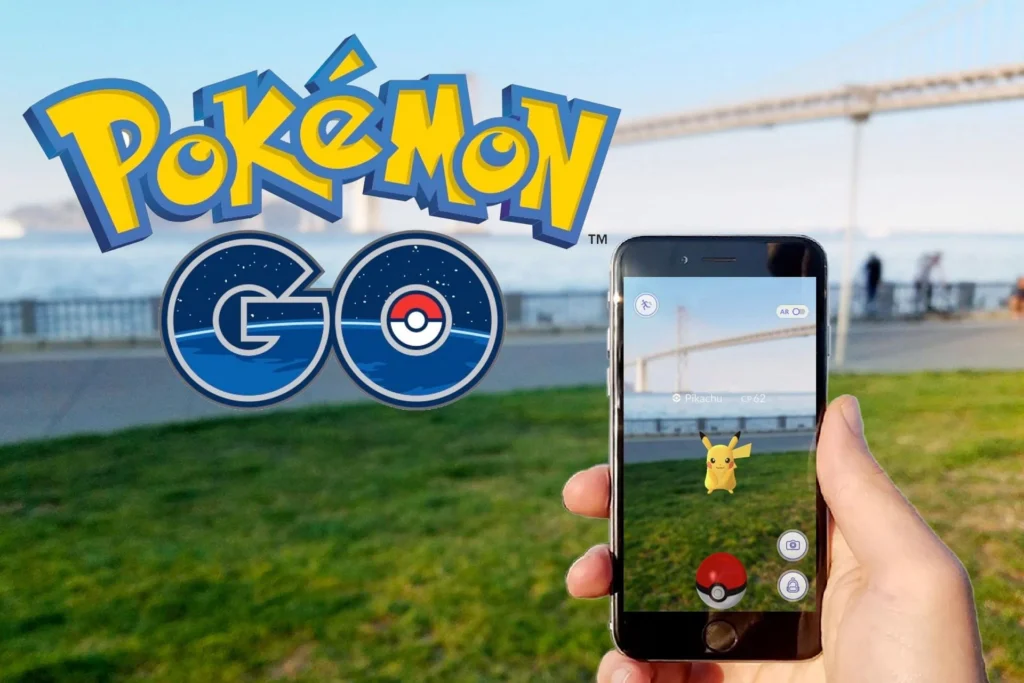
This AR mobile game swept millions off their feet by incorporating location-based gameplay with real-world interaction and created a new benchmark for other AR games iPhone and AR games Android to come.
It’s one of the best augmented reality game examples that shows how augmented reality gaming can become a global phenomenon.
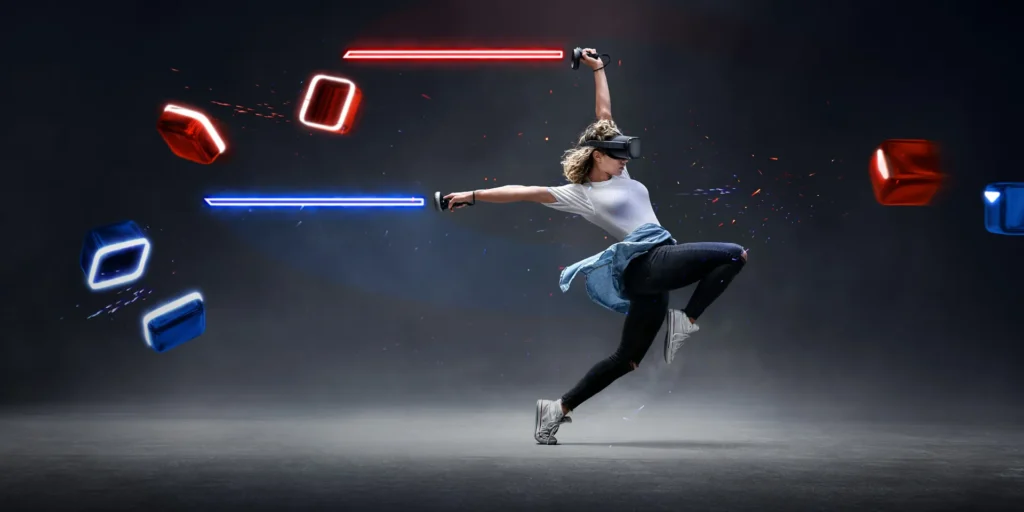
A VR rhythm game that leverages motion tracking for a fully immersive experience, combining fitness and entertainment. This represents the pinnacle of VR game making and shows the future in gaming.
- Remote Collaboration via AR/VR
You know, with so many folks working from home now, there’s been this huge push in AR and VR industry trends that makes virtual meetings and teamwork a whole lot easier.
These tools? They’re not just boosting how much people get done; they’re changing the game when it comes to how teams connect in today’s digital world.
AR in business applications have become essential for modern workplaces.
Examples:
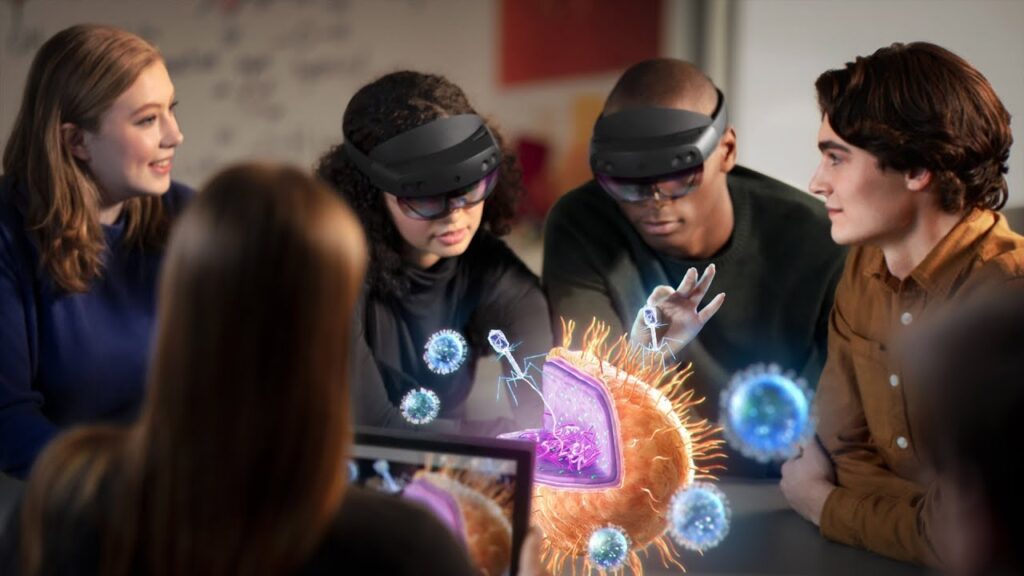
It is this cool VR platform where teams can come together in a shared virtual space. I mean, just think about it, everyone can brainstorm and bounce ideas off each other, which sparks creativity and teamwork. This demonstrates the benefits of virtual reality in business.
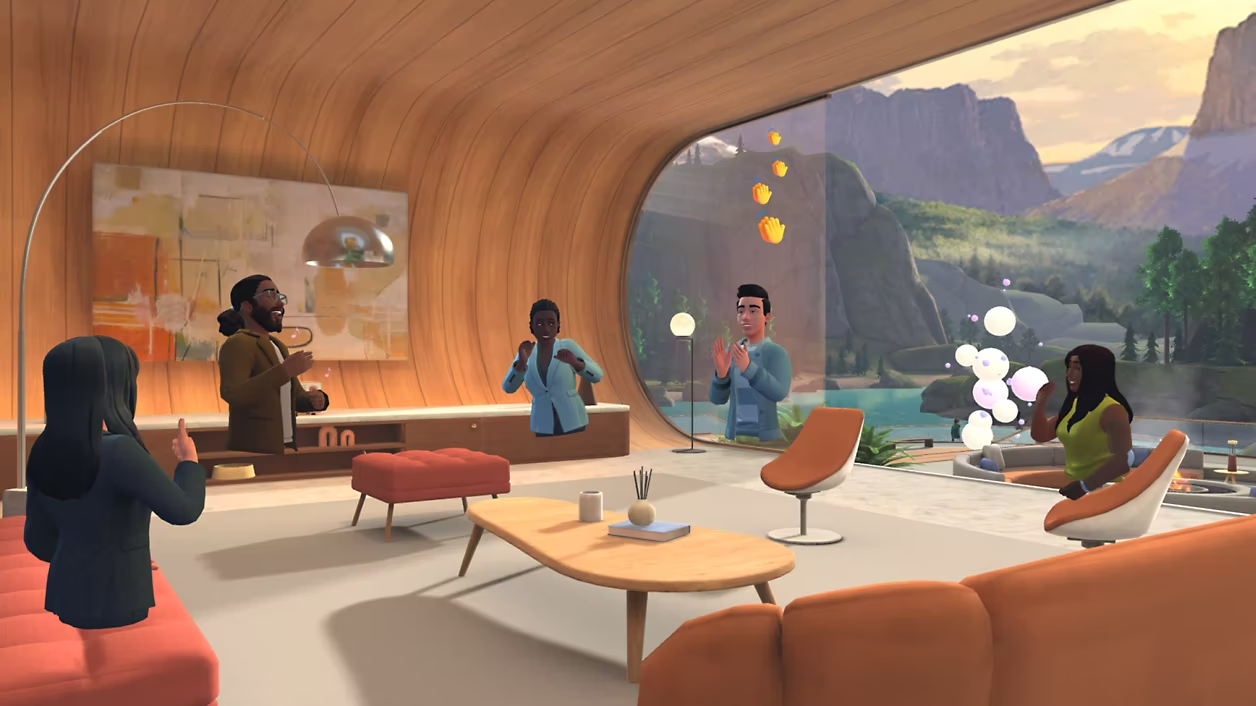
One could be pretty amazed at how it combines AR and VR for these interactive meeting experiences. You get to believe that you are indeed there with your colleagues at the next table, having coffee, when you are miles apart. It’s like mixing the real world with the digital one, and everything just flows so smoothly. Isn’t that wild?
- AR-Powered Search and Navigation
So, when we talk about the AR VR market trends, especially in navigation, it’s all about making things easier, right?
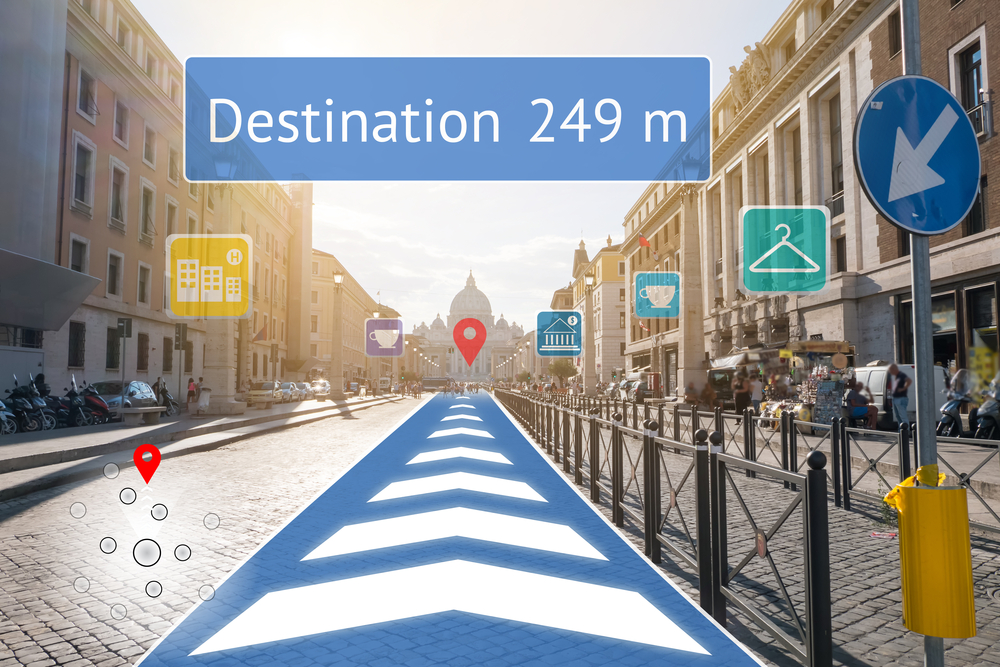
You know, giving folks that intuitive, context-aware guidance, whether they’re outdoors on a hike or trying to navigate through a crowded mall or busy airport. It’s pretty wild how these apps are changing the way we connect with our environment.
Examples:
- Take Google Lens, for instance. It’s a cool tool that mixes AR and AI. What it does is identify objects and then give you detailed info about them. Pretty neat, huh? This is a perfect example of AR application Android technology at work.
- And then there are those indoor AR navigation apps, like ARway. They seriously make life simpler, helping people find their way in those complicated indoor spaces. It’s all about making things more convenient and efficient, and honestly, who wouldn’t want that? These AR mobile application solutions are revolutionizing navigation.
- Personalized Shopping with AR/VR
E-commerce is buzzing with all these AR and VR trends. It’s like, these tools are changing the game, making the shopping experience way smoother for customers and, honestly, cutting down on that annoying decision-making stress.
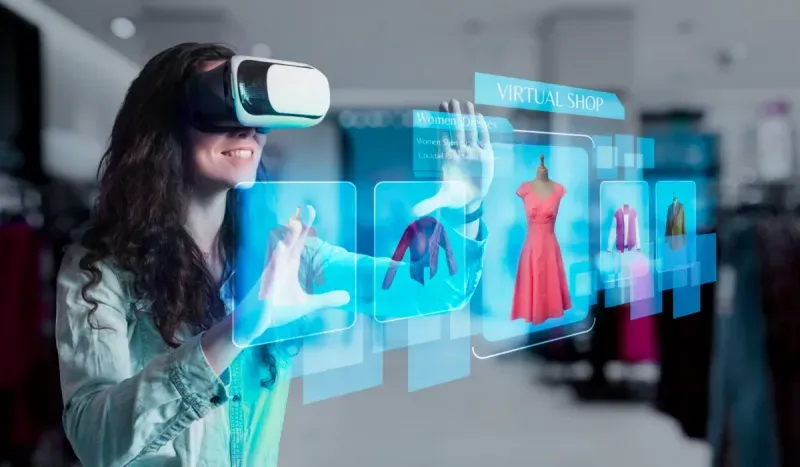
With these technologies, shoppers can see products in real time through virtual reality online shopping platforms, which helps to lower those return rates and boost overall satisfaction. Pretty cool, right?
Examples:
- Take IKEA Place, for example. This app uses augmented reality to let users see exactly how a piece of furniture will look in their own space. It’s like bringing the store into your living room! It makes online shopping feel a lot more natural, don’t you think? This AR design app has set the standard for retail AR applications.
- And then there’s Zara’s AR experience. When you walk into their stores, you can see displays that show models rocking the clothes you’re thinking about buying. It adds this fun interactive twist to shopping, which is honestly a game changer. Who wouldn’t love that? This is a prime example of virtual reality shopping platform innovation.
Emerging AR and VR Applications Across Industries
- Education and Training
So, let’s talk about the future of AR and VR. I mean, the potential these technologies have for changing the way we learn is pretty exciting, right?
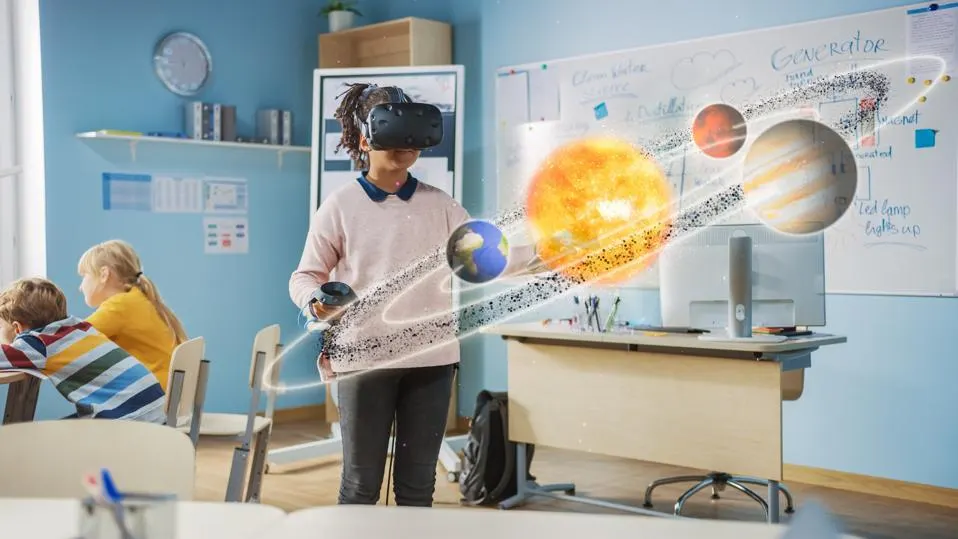
They’re not just for fun; we’re talking about interactive lessons for students and some seriously cool training simulations for professionals. It’s like they’re turning education into something way more engaging and effective.
Augmented reality software development kit tools like Vuforia AR SDK are making it easier for developers to create educational experiences.
Take a look at this:
- Google Expeditions: This platform offers AR and VR field trips to amazing places like the Great Wall of China! Can you imagine? Students can explore these incredible sites without ever having to step foot outside their classrooms. How cool is that?
- Mayo Clinic’s VR Training Modules: They’re a game changer for medical students. These modules simulate surgeries, giving students the chance to get some hands-on experience but in a totally safe environment. It’s like practice without the pressure, which is just what they need, don’t you think?
So yeah, the future of education with AR and VR looks bright!
- Healthcare and Wellbeing
Let’s dive into how AR and VR are shaking things up in the healthcare scene. They’re really making a difference when it comes to diagnostics, treatments, and even therapy sessions.

The cool thing is that the AR VR industry trends are all about boosting patient outcomes and giving healthcare professionals better training. Wearable app development is also playing a crucial role in healthcare AR/VR applications.
Examples:
- Augmedics: They’re using augmented reality to help doctors document stuff in real-time while they’re caring for patients. This not only makes things quicker but also helps in getting things right, which is super important.
- VR for Pain Management: You might have heard of apps like RelieVRx. They’re designed to distract patients during medical procedures, which offers a pretty neat, non-invasive way to deal with pain. It’s like, why not make the experience a bit easier, right?
- Real Estate: Virtual Tours Go Mainstream
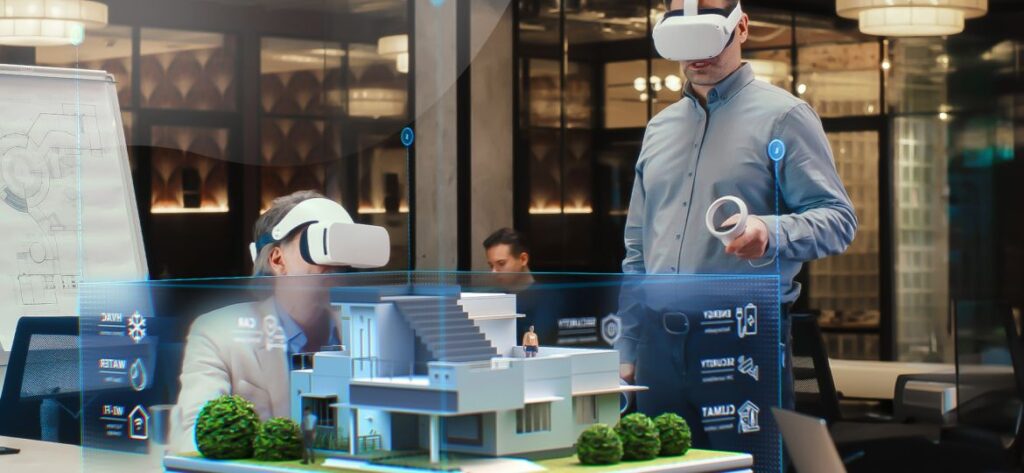
So, here is the thing-the way we perceive buying homes is changing, right? The future of VR and AR in real estate is to make things easier and faster for people. Who wants to spend time driving around to see a bunch of houses when you can explore them from your couch? Zillow augmented reality features are leading this transformation.
Examples:
- Matterport 3D Tours: They’re pretty cool! You can walk through properties virtually, making it a lot easier for both buyers and sellers to save time and energy.
- Houzz AR: This tool lets folks see how their home could look with different upgrades, like, right there in front of them. It really helps turn those wild ideas into something real.
It’s clear that these innovations are shaking things up in the real estate world, making the process way more user-friendly. Don’t you think?
- AR and VR in Retail Marketing
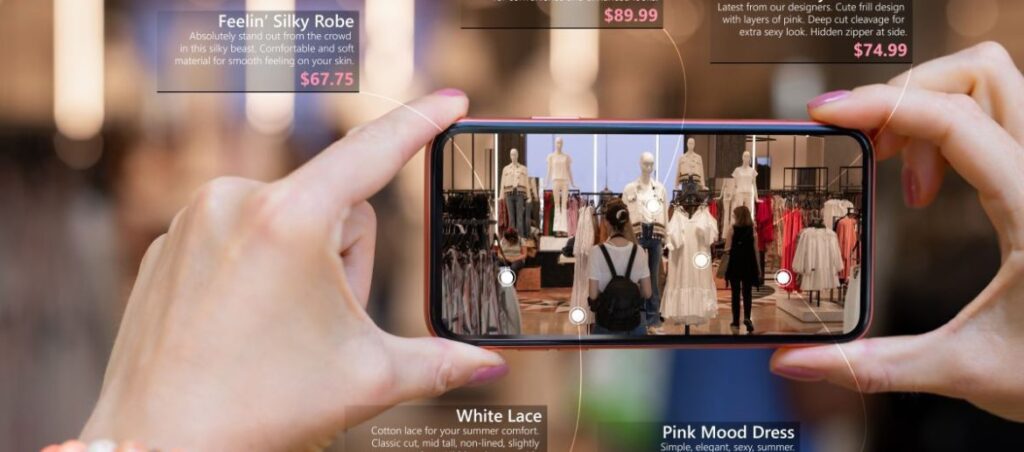
Retailers are doing some great things by using AR VR mobile app features, which make marketing campaigns stick in the minds of users. It’s all about creating those unforgettable experiences that get people talking.
Advertising on mobile games has evolved to include AR elements, creating more engaging campaigns.
Examples:
- Pepsi Max AR campaign: They set up these wild AR screens at bus stops. Can you imagine? Passersby were totally caught off guard, immersed in these surprising experiences. It was like stepping into another world, right there while waiting for the bus.
- Nike’s SNKRS app. They’re doing something pretty cool with AR for their sneaker drops. It’s not just shopping; it’s a whole game now! By adding that element of fun, they’re really boosting customer engagement. Who wouldn’t want to join in on that?
Advanced AR/VR Development and Implementation
Building AR Applications
For those wondering how to make an augmented reality app or how to build an augmented reality app, the process has become more accessible thanks to various augmented reality framework Android options and development tools. How to develop an AR app involves understanding user needs, choosing the right SDK, and creating engaging content.
The augmented reality process typically includes:
- Conceptualization and planning
- Choosing the right augmented reality software development tools
- Creating 3D models and assets
- Programming interactions
- Testing and optimization
Whether you want to create augmented reality app for iOS or make AR app for Android, tools like Unity, ARCore, and ARKit make it possible. Build your own augmented reality experiences by starting with simple projects and gradually increasing complexity.
AR Game Development
The AR game development sector has exploded with opportunities. AR game developers and AR game development solutions providers are creating increasingly sophisticated experiences. AR game development company services now offer everything from AR interactive games to AR games for corporate events.
Augmented reality games for corporate events have become popular team-building activities. These augmented reality games for events combine physical activity with digital challenges, creating memorable experiences. AR online games and augmented reality games online have also gained traction, especially with improved internet speeds.
Cost Considerations
Understanding AR app development cost and augmented reality app development cost is crucial for businesses. AR costs vary depending on complexity, features, and platform. Augmented reality costs typically include:
- Development team expenses
- Software licenses
- Hardware requirements
- Testing and deployment
- Ongoing maintenance
Specialized AR Applications
The market has seen growth in specialized applications like augmented reality horror games and augmented reality shooting games. AR shooter games combine physical movement with digital targets, creating engaging experiences. The augmented reality horror game genre uses environmental scanning to create truly terrifying experiences.
Augmented reality quiz app development has also gained popularity in educational settings, making learning more interactive and engaging.
Technological Advances Powering AR/VR Trends
- The Role of 5G
So, you know, the launch of 5G networks? It’s shaking things up in AR/VR technology trends. We’re talking about lightning-fast data transfer, way less lag, and just smoother experiences overall. Pretty cool, right?
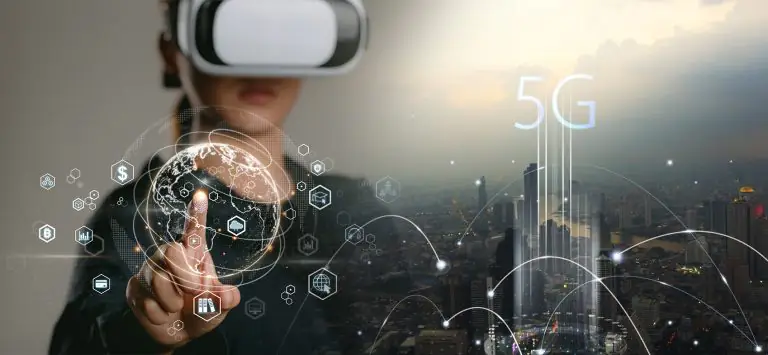
This enables app less AR experiences and AR without an app functionality through cloud processing.
Take a look at these examples:
- Cloud Gaming: Platforms like Stadia are bringing in AR and VR features with hardly any lag. This means that more folks can dive into high-quality gaming. Isn’t that awesome?
- Real-Time AR Apps: Think about apps like Live View; these guys depend on 5G to offer accurate overlays in real time. It really amps up the user experience, doesn’t it?
- AI and Machine Learning Integration
Now, let’s chat about AI. Artificial intelligence development services company offerings are stepping up the game for AR VR mobile apps by digging into data and tweaking things based on what users like. This makes everything feel a lot more personal and, honestly, way more efficient.
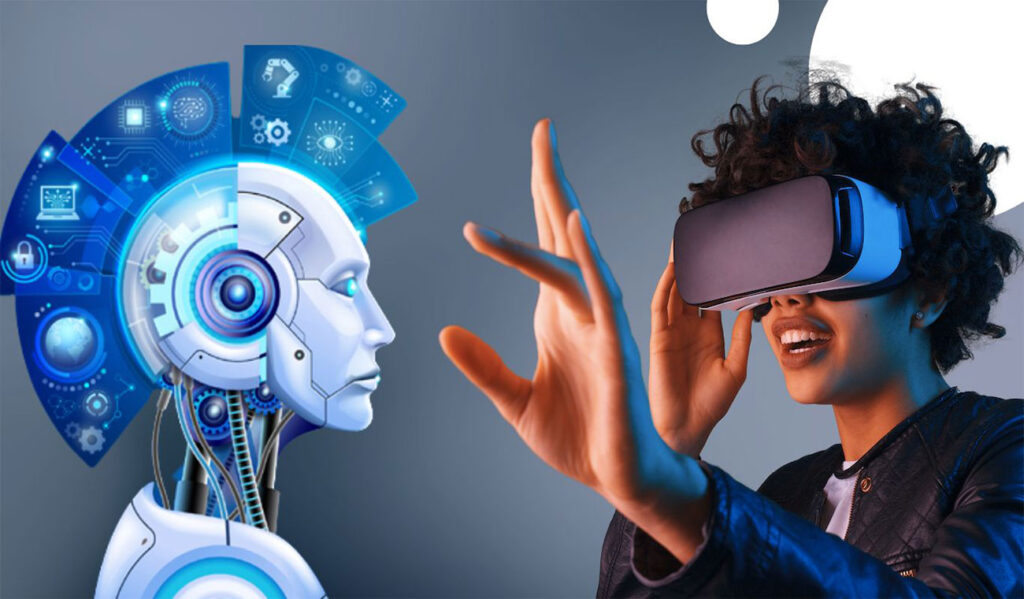
Check out these examples:
- AI-driven VR tutors can provide learning experiences tailored just for you. It’s like having a personal tutor in your pocket!
- AR-based style advisors that give you clothing suggestions based on what you like and what’s trending. How handy is that?
- Wearable Devices and Smart Glasses
Devices such as AR glasses and VR headsets are becoming increasingly affordable and easier to use, making it easy for both the consumer and enterprise markets to use them. The best Apple Watch app integrations now include AR features for fitness and navigation.
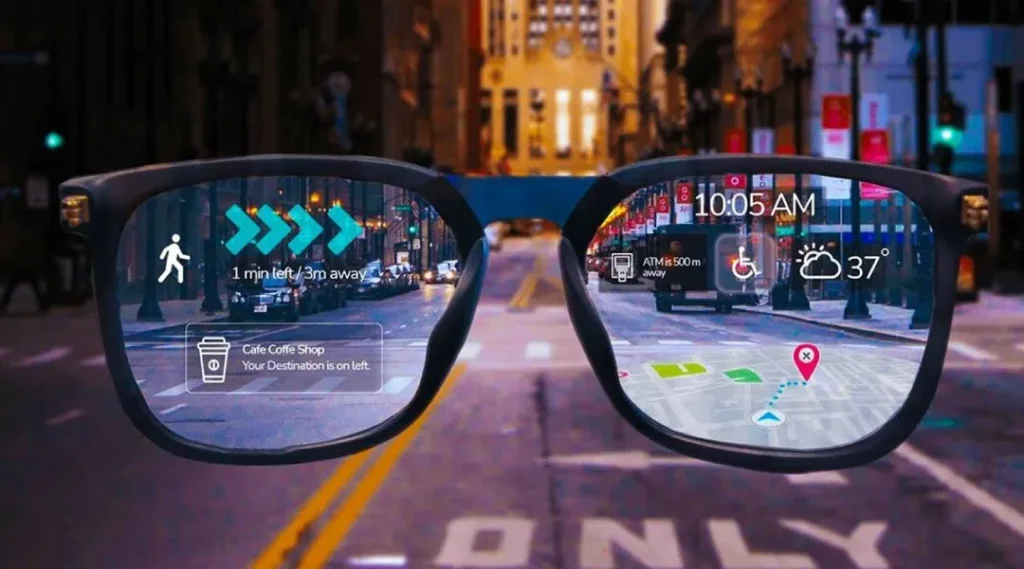
Some examples include:
- Apple Vision Pro: It is sure to create new standards for mixed-reality experiences with excellent features.
- Microsoft HoloLens 2: The leader in enterprise AR solutions, providing tools to industries such as manufacturing and healthcare.
- Industry-Specific Applications
Gaming and Entertainment
The video games and technology sector continues to lead AR/VR innovation. Games with technology integration are becoming more sophisticated, with gaming technology companies pushing boundaries in what’s possible. Video game advancements in AR/VR have created entirely new genres and experiences. Ideas for VR games are constantly evolving, from fitness applications to social experiences.
The augmented reality board game market has also emerged, blending traditional tabletop gaming with digital enhancements.
Augmented games iPhone and augmented games Android offer unique experiences that weren’t possible before. Augmented games for Android particularly benefit from the open ecosystem, allowing for more experimental augmented games development.
- Metaverse and Virtual Worlds
Metaverse app development has become a hot topic, with metaverse development company services in high demand. These virtual worlds represent the convergence of AR, VR, and social networking, creating persistent digital spaces where users can interact, work, and play.
- Industry and Manufacturing
Augmented reality in industry applications have proven invaluable for:
- Remote assistance and maintenance
- Training simulations
- Quality control and inspection
- Assembly line optimization
AR technology company solutions are helping manufacturers reduce errors and improve efficiency through augmented reality building visualization and programming for augmented reality applications.
- Specialized Development Tools
Developers have access to various tools for creating AR experiences. Augmented reality Godot integration allows developers to use this popular game engine for AR development.
The augmented reality blueprint approach helps teams plan and execute AR projects effectively. An augmented reality guide can help newcomers understand the basics of AR development.
Custom AR app development services cater to businesses with specific needs, while AR app developers continue to push the boundaries of what’s possible with mobile AR.
Challenges and Considerations for AR and VR Adoption
Okay, let’s talk about some challenges in AR and VR trends for a minute.
There is much hype surrounding these technologies, correct? But, seriously, we still have a pretty significant hurdle to overcome to make this technology accessible to everyone.
- Development Cost:
Building high-quality AR and VR applications? Not exactly easy-peasy. It demands a significant amount of resources. We are talking about skilled developers and some pretty advanced tools. The augmented reality app developer market is competitive, and finding the right talent can be challenging.
- Hardware Accessibility:
Try getting a hold of a VR headset sometime. There’s some pretty expensive stuff, and most people can’t afford that kind of outlay. It not only limits the pool of users but also delays the dissemination of the technology itself. However, easy augmented reality solutions using smartphones are helping bridge this gap.
- Content Creation:
The deal is that developers need to whip up content that is not only decent but engaging enough to keep people interested. And trust me, that’s no small feat. It takes a good chunk of time, effort, and, yep, more cash. AR VR game development services are evolving to meet these challenges.
- Privacy:
AR and VR apps collect a wide range of data from users, so that data needs to be secure. Users are not going to stick around if they do not feel like their data is safe. In what mobile app can I access augmented reality safely? This is a growing concern for users.
So, with all this in mind, how do we deal with these challenges? Crucial. It’s going to play a big role in shaping the trends future of mobile. Fingers crossed we can work this all out.
- Technical Limitations:
Questions like what is a AR game or understanding 3d vs 2D content creation present learning curves for both developers and users. Argumentative reality apps (likely meant to be augmented reality apps) face technical challenges in terms of processing power and battery life.
So, with all this in mind, how do we deal with these challenges? Crucial. It’s going to play a big role in shaping the trends future of mobile. Fingers crossed we can work this all out.
The Future of AR and VR in Mobile Apps
You know, the future of AR and VR looks promising, and it’s not only about the same old things that we see at the moment. There is a whole list of really cool areas where such technologies can make a real difference. New and emerging technologies continue to push the boundaries of what’s possible.
- Environmental Conservation:
Think about the application of AR and VR in making virtual eco-tours! Great fun, in fact, it will educate people enough to act for our planet. That is pretty cool, right? These emerging technology solutions can help raise awareness about environmental issues.
- Fitness and Wellness:
This means that AR personal trainers and VR yoga classes started to become in vogue, making exercise less boring, plus easier to partake in for many. It’s quite clear who would be interested in personal trainers who come across as having them beside themselves. Apps augmented reality iPhone for fitness are particularly popular.
- Corporate Training:
Aviation and construction, for example, are jumping on the VR bandwagon for training simulations that are, you know, totally risk-free. This can save money and make things safer for everyone involved. It’s a win-win!
So, the early birds will be the ones who will have a significant advantage while businesses pick up mobile app development trends. It is essentially about staying ahead for the long term.
- Special Events and Conventions
Events like Tech Convention NYC showcase the latest AR/VR innovations. These gatherings bring together developers, businesses, and enthusiasts to explore the future of immersive technologies.
- Seasonal Applications
Apps Halloween demonstrate how AR can enhance seasonal experiences, from virtual costume try-ons to spooky AR games that transform your environment.
- Future Cities
Projects like Neom City Saudi Arabia are incorporating AR/VR into urban planning and citizen services, showcasing how these technologies can shape future living spaces.
So, the early birds will be the ones who will have a significant advantage while businesses pick up mobile app development trends. It is essentially about staying ahead for the long term. Whether you want to create AR application or make augmented reality app, now is the time to start.
Best Practices for AR/VR Development
When looking to build AR app or create AR app solutions, consider these best practices:
- User Experience First: Whether developing AR apps on iPhone or AR application Android, prioritize intuitive interfaces
- Performance Optimization: Ensure smooth performance across devices
- Cross-Platform Compatibility: Consider both AR apps iPhone and Android users
- Regular Updates: Keep up with platform changes and user feedback
Conclusion
You know, it’s just another way AR and VR trends in mobile apps are shaking up the world of mobile apps. It seems as if a whole new chapter has opened up concerning tech.
These technologies were not about pretty graphics; they’re shifting the way we do shopping, learning, and even game-play experiences in an incredibly more immersive and engaging way. Every day seems to bring fresh opportunities.
From best AR games to practical augmented reality web app solutions, the landscape continues to evolve. Whether you’re interested in how to create an augmented reality app or exploring VR in ecommerce, the tools and resources are more accessible than ever.
Now, in terms of companies, this matters for staying in the competition. So for them, tracking what’s hot in the world of mobile applications is quite significant.
So they can make sure to invest in AR and VR, as this has become a potential opportunity for some cool application development that will appeal to the needs of users.
And honestly, as we look ahead, the possibilities with AR and VR feel almost limitless, right? From augmented reality gun app games to educational tools, from virtual reality ecommerce to healthcare applications, these technologies are reshaping our digital landscape.
What do you think is the most exciting part of these trends? I’d love to hear your thoughts. Drop a comment below!
FAQs
Which industries are ahead in AR and VR adoption?
The industries leading the charge in adopting AR and VR include gaming, retail, healthcare, and education. Augmented reality technology companies are particularly focused on these sectors.
How does 5G enhance AR/VR experiences?
5G supports higher data transfer and lower latency for smoother, real-time AR/VR applications, enabling features like AR without an app and cloud-based processing.
What are the primary challenges of AR/VR in mobile apps?
High development costs, restricted access to hardware, and privacy concerns are the main challenges. Understanding augmented reality costs is crucial for planning.
Do small businesses have a place for AR and VR?
Yes, even small businesses can now use AR to visualize virtual products and VR for remote training. Easy augmented reality solutions make it accessible for smaller budgets.
What is the future of AR and VR trends in mobile applications?
Future Trends: AI Integration, Wearable Devices, Applications in Fitness, Corporate Training, and Sustainability. The future in gaming and other industries looks increasingly immersive.
How can I start developing AR apps?
Begin by learning how to make augmented reality app basics, choose a development platform, and start with simple projects. Resources for how to develop an AR app are widely available online.
What’s the difference between AR apps on different platforms?
AR apps for Android and AR apps on iPhone may have different features due to platform-specific tools, but core functionality remains similar across platforms.
What is AR Doodle app on Android?
It allows users to create AR drawings in their environment. It’s a collection of AR features including AR doodle app Android functionality.







